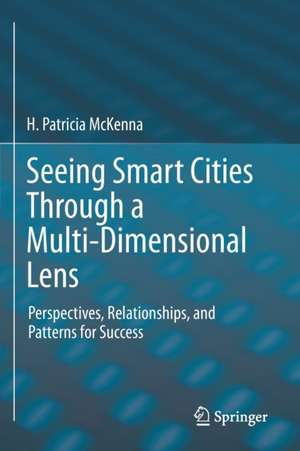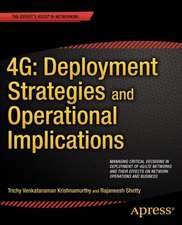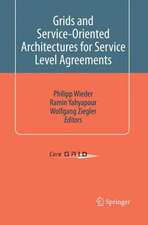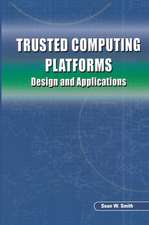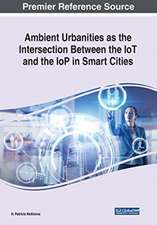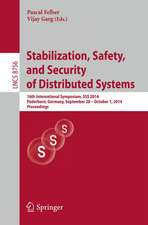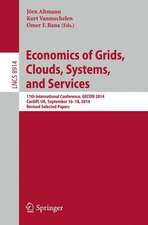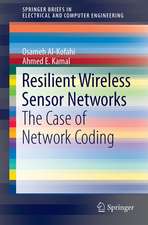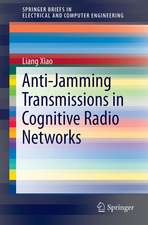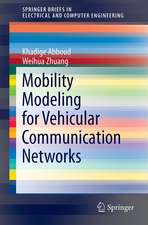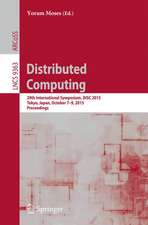Seeing Smart Cities Through a Multi-Dimensional Lens: Perspectives, Relationships, and Patterns for Success
Autor H. Patricia McKennaen Limba Engleză Paperback – 8 mai 2022
The analysis of findings in this work surfaces a rich and interwoven tapestry of patterns from the qualitative data highlighting for example, the importance of emotion/affect, privacy, trust, and data visualizations in influencing and informing the directions of smart cities and regions going forward. Correlational analysis of quantitative data reveals the presence and strength of emerging relationships among elements assessed, shedding light on factors that may serve as starting points for understanding what is contributing to potentials for improving success in smart cities and regions.
| Toate formatele și edițiile | Preț | Express |
|---|---|---|
| Paperback (1) | 753.55 lei 6-8 săpt. | |
| Springer International Publishing – 8 mai 2022 | 753.55 lei 6-8 săpt. | |
| Hardback (1) | 1044.25 lei 6-8 săpt. | |
| Springer International Publishing – 8 mai 2021 | 1044.25 lei 6-8 săpt. |
Preț: 753.55 lei
Preț vechi: 941.94 lei
-20% Nou
Puncte Express: 1130
Preț estimativ în valută:
144.19€ • 150.95$ • 119.31£
144.19€ • 150.95$ • 119.31£
Carte tipărită la comandă
Livrare economică 05-19 aprilie
Preluare comenzi: 021 569.72.76
Specificații
ISBN-13: 9783030708238
ISBN-10: 3030708233
Ilustrații: XVII, 158 p. 34 illus.
Dimensiuni: 155 x 235 mm
Greutate: 0.26 kg
Ediția:1st ed. 2021
Editura: Springer International Publishing
Colecția Springer
Locul publicării:Cham, Switzerland
ISBN-10: 3030708233
Ilustrații: XVII, 158 p. 34 illus.
Dimensiuni: 155 x 235 mm
Greutate: 0.26 kg
Ediția:1st ed. 2021
Editura: Springer International Publishing
Colecția Springer
Locul publicării:Cham, Switzerland
Cuprins
Foreword.- Preface.- List of Abbreviations.- Section 1 –Smart City Perspectives, Spaces for People, and a Hybrid Study Approach . Chapter 1: Perspectives on Smart Cities: An Introduction and Background.- Chapter 2: Sensing as Seeing: Creating Spaces for People in Smart Cities.- Chapter 3: A Hybrid Approach to Seeing Through Smart Cities: Combining Correlational and Case Study Research Designs .- Section 2 – Emerging Urban Patterns and Relationships influencing and Informing Smart Cities.- Chapter 4: Awareness and Seeing: People and Data in Smart Cities.- Chapter 5: Learning and Data in Smart Cities .- Chapter 6: Openness and Data Access in Smart Cities.- Chapter 7: Innovation and Data in Smart Cities.- Section 3 – Complexity, Disruptiveness, and Transformation in Smart Cities.- Chapter 8: Disruption in Smart Cities/Regions: Navigating Pathways and Directions for Success.- Chapter 9: After Synthesizing and Analyzing: A Typology for Seeing Through Smart Cities.- Index.
Notă biografică
Patricia McKenna is the founder and President of AmbientEase (Emergent Adaptive Solutions Everywhere), a Canadian company providing information services to many sectors. As such, Patricia works within and across diverse domains (interdisciplinary) of scholarship and practice, collaborating in team efforts to set up international, national, regional, and local information services, research projects, startups, and other creative and future-oriented initiatives. McKenna is also the Director of the UrbanitiesLab, an initiative focusing on the exploration of smart cities and learning cities. Author of well over 40 publications including, contributions to special journal issues, a book, and chapter contributions to books pertaining to the smart cities’ domain, Patricia is a regular presenter of papers at international conferences as well as a program board member and session organizer. With a focus on smart cities and learning cities, Patricia engages with diverse sectors around useexperience and unexpected possibilities for generating and leveraging increased awareness and creativity in 21st century information environments. Patricia holds a BA from the University of New Brunswick, an MLS from McGill University, and a Doctorate in information management (focusing on emerging technologies) from Syracuse University
Textul de pe ultima copertă
This book provides an interdisciplinary lens for exploring, assessing, and coming to new understandings of smart cities and regions, focusing on the six dimensions of sensing, awareness, learning, openness, innovation, and disruption. Using a hybrid case study and correlational approach, people from diverse sectors in a variety of small to medium to large-sized cities in multiple countries (e.g., Canada, United States, Ireland, Greece, Israel, etc.) provide experience-based perspectives on smart cities together with assessments for elements pertaining to each of the six dimensions.
The analysis of findings in this work surfaces a rich and interwoven tapestry of patterns from the qualitative data highlighting for example, the importance of emotion/affect, privacy, trust, and data visualizations in influencing and informing the directions of smart cities and regions going forward. Correlational analysis of quantitative data reveals the presence and strength of emerging relationships among elements assessed, shedding light on factors that may serve as starting points for understanding what is contributing to potentials for improving success in smart cities and regions
The analysis of findings in this work surfaces a rich and interwoven tapestry of patterns from the qualitative data highlighting for example, the importance of emotion/affect, privacy, trust, and data visualizations in influencing and informing the directions of smart cities and regions going forward. Correlational analysis of quantitative data reveals the presence and strength of emerging relationships among elements assessed, shedding light on factors that may serve as starting points for understanding what is contributing to potentials for improving success in smart cities and regions
Caracteristici
Among the unique features of this book is the typology developed for seeing through the lens of smart cities, providing a theory building tool inviting explorations from urban researchers while opening a space for further testing and validation by urban practitioners going forward; The literature reviews conducted in each chapter enable the identification of key challenges and opportunities which, together with the findings from explorations conducted throughout this work, support the formulation of a series of implications for research and for practice, and the making of recommendations for moving forward; Additionally, this book engages readers with the notion of “seeing” and the metaphor of “seeing through” in support of interpretations and mechanisms for improving understandings of smart cities while posing three questions designed for educators, students, and community leaders at the end of each chapter
